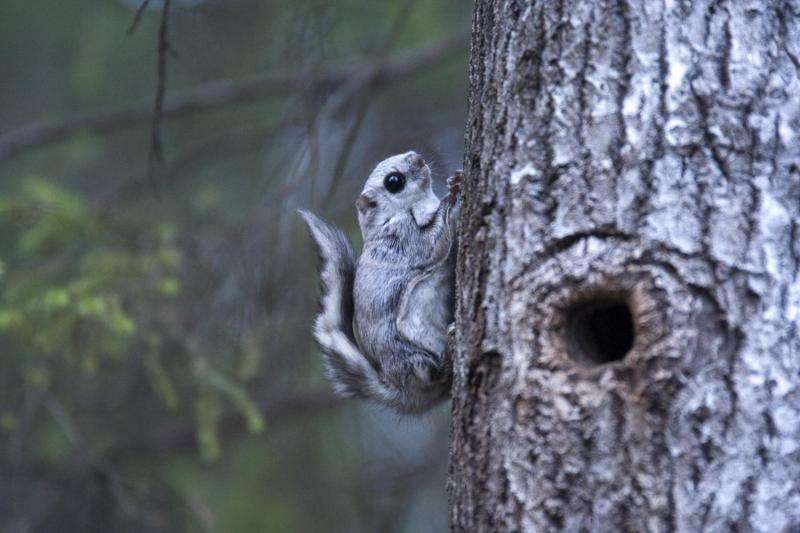Predicting suitable habitats for the Siberian flying squirrel in different felling scenarios

In support of forest-related decision-making, methods are needed which enable the assessment of potential impacts of forest management activities and the comparison of different forest policies. The amount of suitable habitat for the Siberian flying squirrel in the future was predicted in different felling scenarios using a Finnish large-scale forestry dynamics model MELA and sample plot data from the National Forest Inventory (NFI).
Initial forest data for the scenario analyses was generated by means of satellite imagery and the NFI sample plot data. The spatial forest data enabled the use of patch- and landscape-scale models in predicting the presence of flying squirrels. "Integrating the estimation method with the MELA model will allow the impact assessment of alternative felling scenarios in areas of different sizes," explains Helena Haakana, Researcher at Luke. The same approach can be applied to assess the impacts of habitat conservation measures on wood production and forest revenues.
The sample plot data from the NFI is commonly used in national and regional scenario analyses to assess the development of forest resources and future felling potential. The NFI covers the whole country, but the fairly sparse network of sample plots allows calculations only for large areas, such as provinces. Satellite imagery provides a means to estimate forest data for smaller areas and on full geographic coverage. This allows scenario analyses of forest production and utilization possibilities also at local level, for example, for municipalities. In addition, spatially explicit constraints on wood production, such as steep slopes and local land-use plans, can be taken into account in the analyses.
Regional variation in the impacts of fellings on the predicted habitats suitable for the flying squirrel
The Siberian flying squirrel is strictly protected in Europe and classified as a near threatened species in Finland. One reason for this population decline is most probably the loss of suitable habitats, resulting from intensive forest management. The flying squirrel prefers mature spruce-dominated mixed forest with some deciduous trees such as aspen.
The development of suitable habitats for the flying squirrel was studied in three alternative felling scenarios in Southern Finland. The results confirmed that increasing the utilisation rate of felling potential from the level of business-as-usual to meet the policy targets of regional forest programmes would decrease the amount of suitable habitat in the future. The impacts varied between the regions, depending on the species density and forest structure. However, the occurrence of the flying squirrel could not be accurately predicted with forest and landscape variables only. Obviously, there are other factors than forest management, such as predators and historical species distribution, also affecting presence.
The research was carried out in cooperation with the Finnish Museum of Natural History in a project funded by the Finnish Ministry of the Environment entitled "Habitats of the Siberian flying squirrel (Pteromys volans) in South Finland and the development of potential habitats in different cutting scenarios in 2005 – 2055."
More information: Helena Haakana et al. Comparing regional forest policy scenarios in terms of predicted suitable habitats for the Siberian flying squirrel (), Scandinavian Journal of Forest Research (2016). DOI: 10.1080/02827581.2016.1221991
Provided by Natural Resources Institute Finland
















